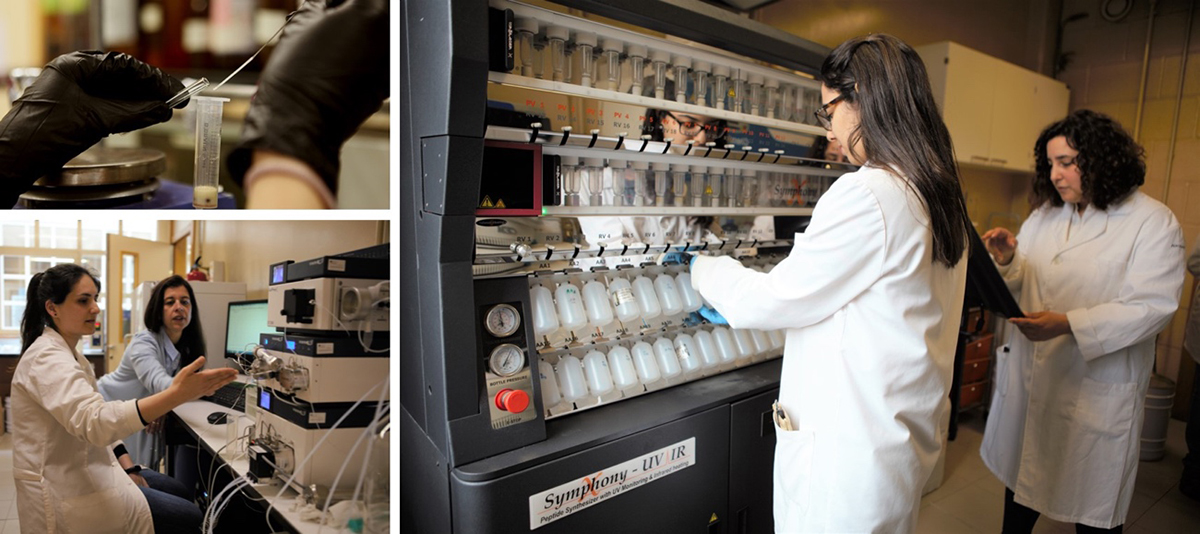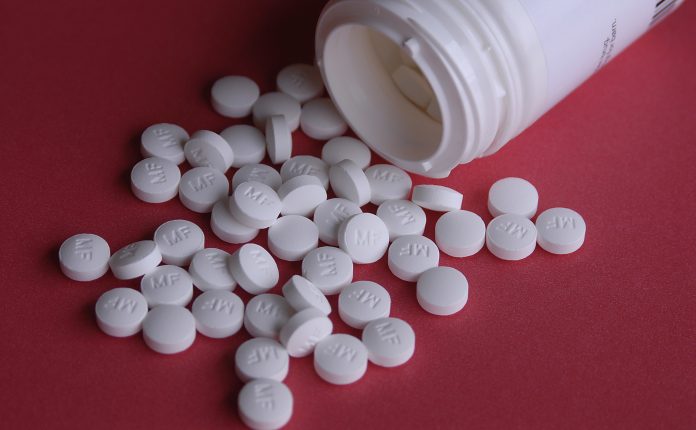Paula Gomes, Associate Professor of Chemistry and Senior Researcher in Bioorganic and Peptide Chemistry at the University of Porto, Portugal, explains why peptides are amongst the most promising molecules for the future
Research on peptides and their prospective applications has been regaining momentum, as we are running out of options to tackle life-threatening conditions, mainly due to drug safety and resistance issues. Due to their potent and selective action, a broad range of biological targets and effects and generally low toxicity and immunogenicity, bioactive peptides are currently the most appealing alternatives to the so-called “conventional drugs”, to fight neurodegenerative diseases, drug-resistant cancers and, especially, antibiotic-resistant infections in humans.
Antimicrobial peptides (AMP) are being actively pursued as the antibiotics of the future, for use not only in humans but also in livestock and food plants, as there is an urgent need to find sustainable alternatives to either drugs or pesticides that are unsafe and/or no longer efficient.
The extraordinary value of peptides is not exhausted in their antimicrobial properties, as bioactive peptides are proven to be highly efficient for non-infectious diseases, as well as nutraceuticals or cosmeceuticals. For example, anti-hypertensive, antioxidant, antidiabetic, neuroactive and immuno-modulatory peptides are formed when milk is processed to produce yoghurt.
Likewise, collagen-boosting peptides present in commercially available cosmetics have been under the spotlight not only for their known anti-ageing effects but also for their wound-healing properties that could be of use in skin and soft tissue infection (SSTI) management. As life expectancy grows, active research on peptides as effective and biocompatible options to deal with hypertension, diabetes, ageing and health complications thereof, such as chronic wounds (venous/pressure/diabetic foot ulcers), is an urgent need and not merely an academic exercise.
At the forefront of materials science and engineering, we can also find peptides, although they do not necessarily exhibit intrinsic bioactivity. In this setting, self-assembling peptides (SAP) have gained relevance for their potential use as biomimetic structures, such as collagen-like materials or components of synthetic extracellular matrices built to promote tissue regeneration. SAP have been also explored as biocompatible vehicles for intracellular delivery of drugs or bio-signaling molecules like, for example, nitric oxide, a potent vasodilator relevant in many physiological processes.
Having early perceived peptides as one of the most promising types of molecules for the future, Paula Gomes pursued her PhD in Peptide Chemistry (1997-2000), to work on peptide-based vaccines mentored by Professor David Andreu, in Barcelona. Returning to her Alma Mater, the University of Porto, she gathered a bioorganic & medicinal chemistry research team now integrated into the Molecular Synthesis group of the largest Chemistry-based Research Unit in Portugal, LAQV-REQUIMTE.
Research at Gomes’s lab builds on peptide chemistry principles to develop new therapeutic strategies, in close collaboration with experts from complementary areas, such as biomedical engineering, pharmaceutical sciences, biotechnology and agricultural and food sciences.
The main lines of research at Gomes’s lab focus on: (i) New antimicrobial and wound-healing peptides to tackle SSTI; (ii) Peptide-modified materials for diverse biomedical applications, including osteogenic growth promoters, antibacterial surfaces and nitrogen oxide releasing hydrogels; (iii) Cell-penetrating peptides as drug and nucleic acid carriers; (iv) Identification and potential applications of AMP derived from animal toxins, like snake venoms or amphibian secretions and more recently; (iv) AMP-based strategies to combat plant diseases or prevent food spoilage.

The previous are only a few of the applications that can be envisaged for peptides, explaining why interest in these biomolecules and added-value products thereof is rapidly growing in diverse sectors, including the pharmaceutical industry. The latter is a relevant sign that times are finally changing, as the Big Pharma has for many years relegated peptides as prospective drugs.
This has been mainly due to peptides’ low oral bioavailability, extensive metabolic degradation and rapid excretion and high production costs either by biotechnological or chemical routes; however, the multiple advantages of peptides as therapeutic agents, along with latest developments in both large-scale production methods and metabolically-stable peptide analogues underpin the ongoing paradigm shift, which peptide scientists have been longing for.
The rising awareness on the scientific, technological and economic worth of peptides is starting to energise investment on peptide research and peptide production facilities. One example is the Peptide Synthesis Facility of the Faculty of Sciences of the University of Porto, which Gomes coordinates. This facility, yet unmatched in Portugal, was open to provide peptide synthesis services in 2016, thanks to Portuguese/European Union co-funding to acquire a state-of-the-art multiple synthesizer (Figure 1) the only one in the country.
According to Gomes, the next step to make Portugal truly competitive in Peptide Science, by attracting industrial partners working on or with peptides, is a large-scale production unit. Other European facilities are on this track, like, e.g., PeptLab, where a large scale peptide synthesizer has been instated on the past 12th of June.
Gomes hopes that positive signs in this same direction will come up soon in more peripheral regions, as Peptide Science is crucial within strategies for smart specialisation.
References
F. Costa, C. Teixeira, P. Gomes, M. C. L. Martins. “Clinical Applications of Antimicrobial Peptides” in Antimicrobial Peptides, Advances in Experimental Medicine and Biology 1117, K. Matsuzaki (Ed.), Springer Nature Singapore Pte Ltd., 2019, pp. 281-298. https://doi.org/10.1007/978-981-13-3588-4_15
C. Teixeira, R. Ferraz, C. Prudêncio, P. Gomes. “Collagen-mimetic peptides for tissue regeneration and repair” in Peptides and Proteins as Biomaterials for Tissue Regeneration and Repair, M. Barbosa and M. C. L. Martins (Eds.), Elsevier Ltd., Woodhead Publishing, 2018, pp. 284-307. https://doi.org/10.1016/B978-0-08-100803-4.00011-5
Gomes, C. Teixeira, R. Ferraz, C. Prudêncio, P. Gomes. Wound-Healing Peptides for Treatment of Chronic Diabetic Foot Ulcers and Other Infected Skin Injuries, Molecules 2017, 22, 1743. https://doi.org/10.3390/molecules22101743
M. Barbosa et al. Antimicrobial coatings prepared from Dhvar-5-click-grafted chitosan powders. Acta Biomaterialia 2019, 84, 242-256. https://doi.org/10.1016/j.actbio.2018.12.001
J. Durão, N. Vale, S. Gomes, P. Gomes, C. C. Barrias, L. Gales. Nitric Oxide Release from Antimicrobial Peptide Hydrogels for Wound Healing, Biomolecules 2019, 9, 4. https://doi.org/10.3390/biom9010004
J. R. Almeida et al. A novel synthetic peptide inspired on Lys49 phospholipase A2 from Crotalus oreganus abyssus snake venom active against multidrug resistant clinical isolates. European Journal of Medicinal Chemistry 2018, 149, 248-256. https://doi.org/10.1016/j.ejmech.2018.02.055
B. Mann, S. Athira, R. Sharma, R. Bajaj. “Bioactive peptides in yogurt” in Yogurt in Health and Disease Prevention, N. Shah (Ed.), Elsevier Inc., 2017, pp. 411-426. http://dx.doi.org/10.1016/B978-0-12-805134-4.00024-9
E. B.-M. Daliri, D. H. Oh, B. H. Lee. Bioactive Peptides, Foods 2017, 6, 32. https://doi.org/10.3390/foods6050032
Acknowledgement
Research Unit LAQV-REQUIMTE is supported by grant UID/QUI/50006/2019 with funding from FCT/MCTES through Portuguese national funds.
Paula Gomes
Associate Professor of Chemistry
and Senior Researcher of Bioorganic and Peptide Chemistry
Secretary for the European Peptide Society (EPS)
National Representative of Portugal
at Division VII – Chemistry and Human Health of the International Union for Pure and
Applied Chemistry (IUPAC)
Department of Chemistry and Biochemistry, Faculty of Sciences, University of Porto
Tel. +351 220 402 563
www.fc.up.pt/pessoas/pgomes/people.html
*Please note: This is a commercial profile











